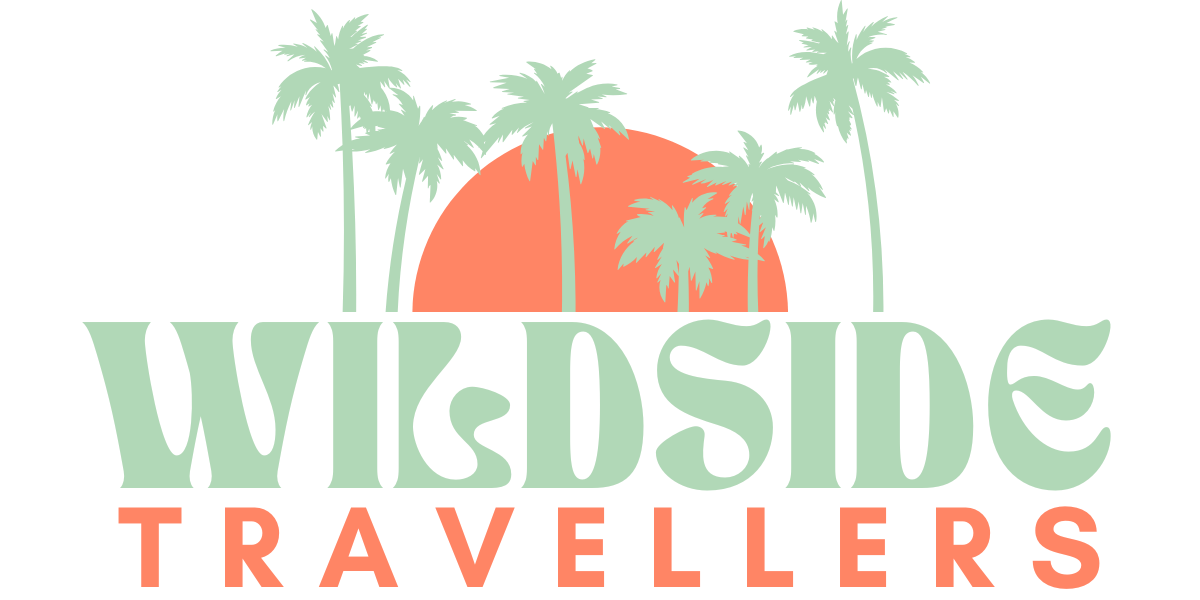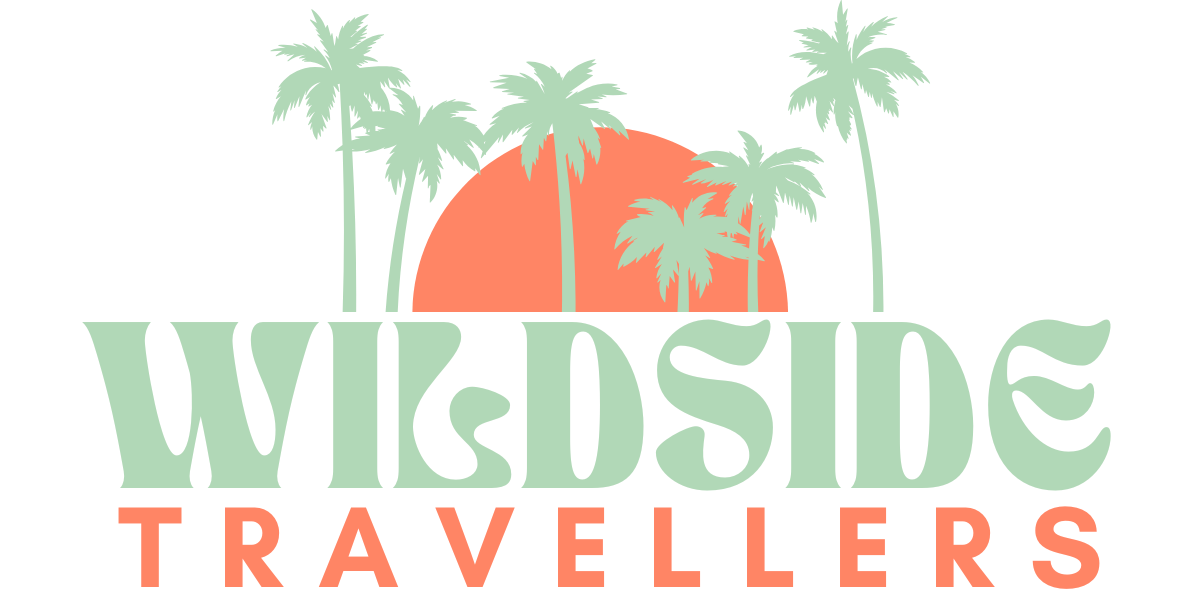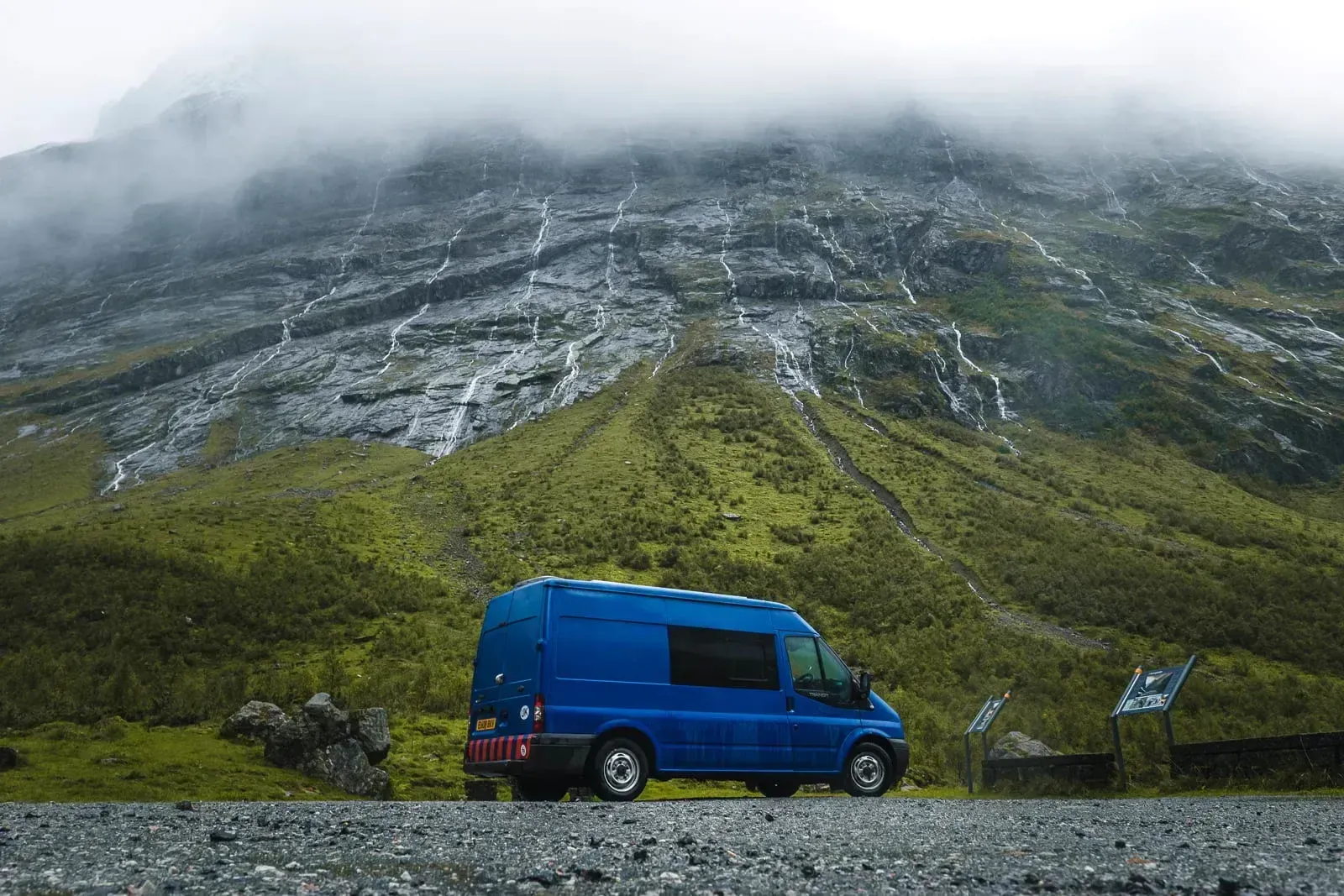Disclosure: This post may contain affiliate links, which means we may receive a commission if you click a link and purchase something that we have recommended. While clicking these links won't cost you anything, they will help us keep this site running and free for everyone.
Planning a Norway road trip is one of the best ways to experience the country’s breathtaking landscapes. We spent two months road-tripping around Norway, from the beautiful fjords of Western Norway, all the way up to the dramatic landscapes of the Lofoten Islands.
Whether you’re dreaming of hiking under the midnight sun, chasing the Northern Lights, or driving along iconic roads like Trollstigen, this guide will help you plan the ultimate adventure.
In this post, I’ll cover everything you need to know to plan a Norway road trip, including the best time to go, how to choose your route, what stops you shouldn’t miss and a sample itinerary to get you started.
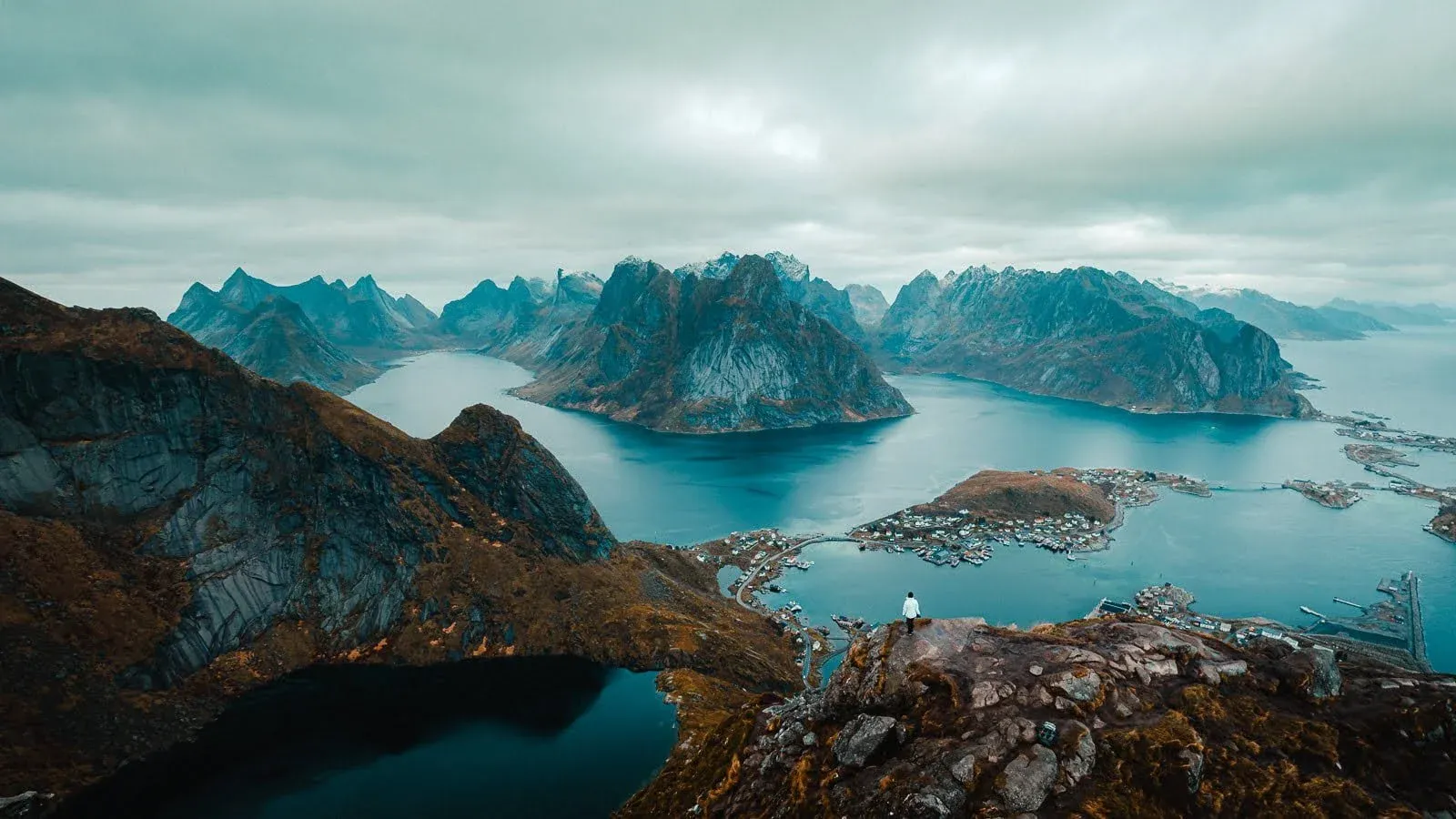
1. Choose the best time to visit Norway
Norway’s landscapes and activities change dramatically with the seasons, so the best time to visit depends on the type of road trip you want to take.
- ☀️ Summer (June - August): Summer is the most popular time, with the iconic midnight sun, accessible hiking trails and great weather. It's the best season for outdoor adventures and camping.
- ❄️ Winter (December–March): Winter is great for northern lights hunting, skiing and winter activities. However, roads in the north can be icy and many hiking trails are too dangerous.
- 🍂 Spring (April–May) & Autumn (September–October): The shoulder seasons are quieter and more budget-friendly, with fewer tourists and beautiful colors. However, some attractions and accommodations may have limited opening hours.
We did our roadtrip in September and October and found it to be a great time to visit, despite a few drawbacks. The autumn colours were stunning but the weather was a bit tempermental with stormy weather, especially in Lofoten.
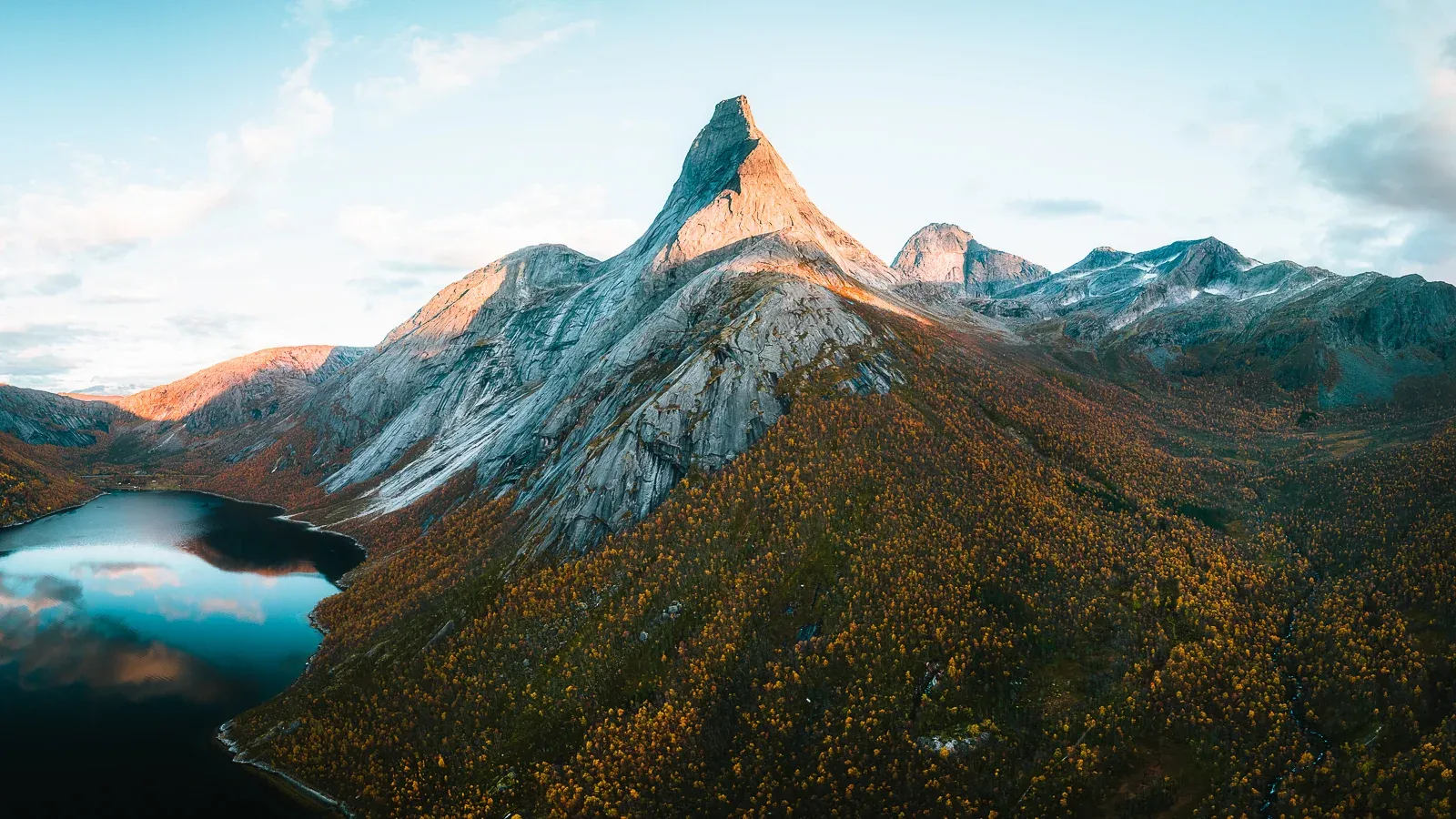
We did manage to see the Northern Lights which was incredible and another highlight was how quiet it was. We never had any trouble finding camping spots and we had most hikes to ourselves!
2. Choose Where to Visit on Your Norway Road Trip
Norway is a massive country, it takes over 30 hours to drive from one end to the other, so choosing where to go is one of the first and most exciting steps in planning your trip.
The country is divided into several regions, each offering unique landscapes and experiences.
- Fjord Norway (Bergen, Geiranger, Trolltunga): This region is famous for its dramatic fjords, waterfalls, and some of the country’s most scenic drives.
- Eastern Norway (Oslo, Lillehammer, Rondane National Park): Home to the capital, Oslo, as well as inland mountains and national parks.
- Trøndelag (Trondheim & Surroundings): Trondheim is a vibrant city while the surrounding countryside is great for hiking and exploring off the beaten path.
- Northern Norway (Lofoten Islands, Senja, Tromsø): If you’re craving rugged landscapes, remote villages and arctic adventures, head north. Winter brings Northern Lights and summer brings the midnight sun.

We covered a mix of these regions on our trip, but didn’t dive too deeply into each one. Since we drove from the UK, our starting point was actually across the border in Sweden.
From there, we made our way into Fjord Norway, soaking up the dramatic landscapes before heading north through Trøndelag. We continued all the way up to the stunning Lofoten Islands and finally wrapped things up with a visit to the wild and beautiful island of Senja.
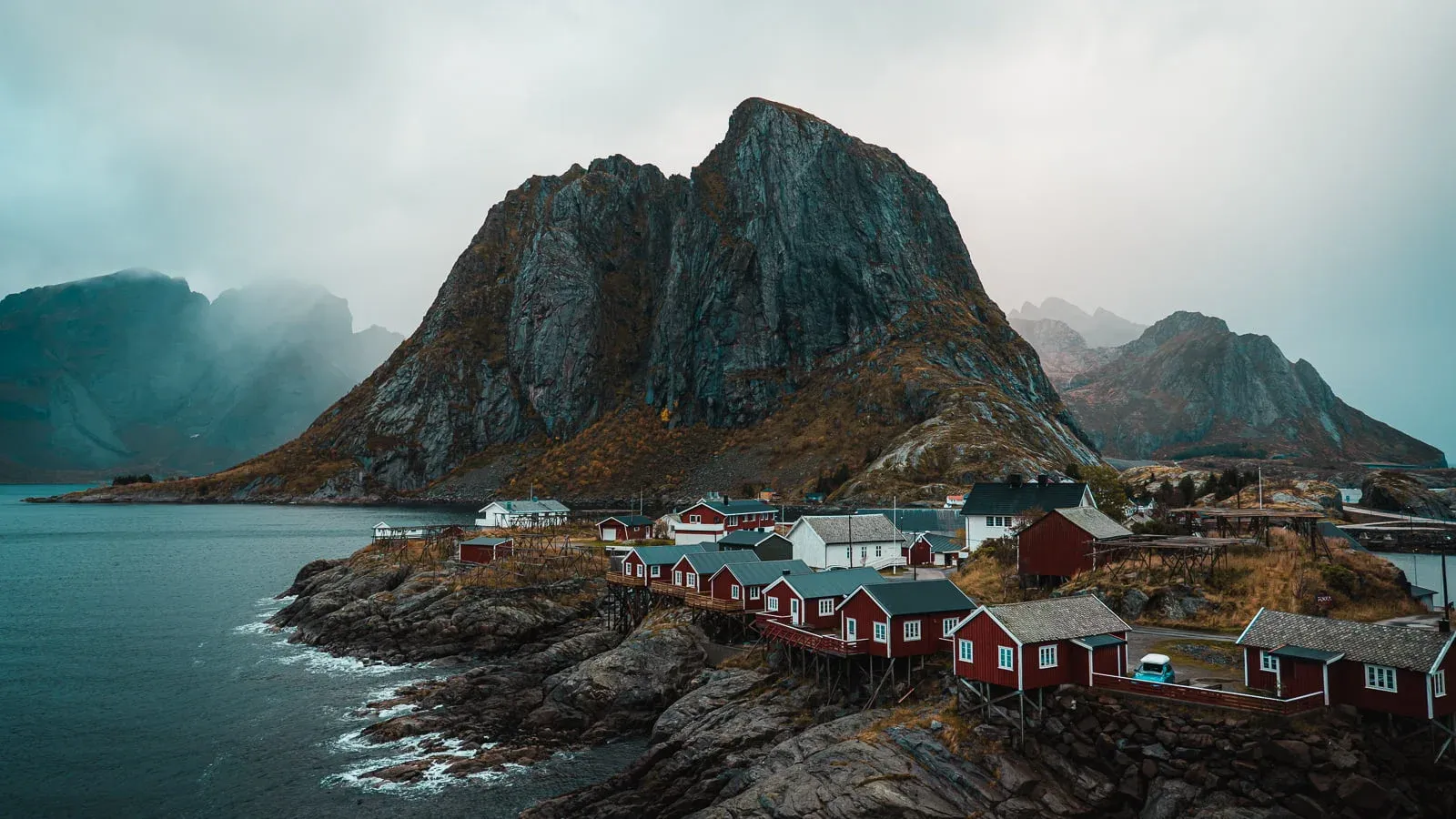
It can be tricky to decide where to go, but I’d highly recommend focusing on Fjord Norway and the Lofoten Islands. These areas offer the most breathtaking scenery, incredible hiking and some of Norway’s top attractions.
3. Decide Your Norway Road Trip Length & Route
Your trip length will determine how much of Norway you can realistically see and which route makes the most sense.
I'd pick one or two regions to explore deeply rather than trying to see it all. This way you’ll have time to enjoy the scenery rather than spending your trip behind the wheel.
- 3-5 Days: Stick to one area to make the most of your time. For example, focus on the fjords around Bergen or the Lofoten Islands.
- 7-10 Days: Perfect for combining two regions without feeling rushed. You might explore Fjord Norway and Trøndelag or pair the Lofoten Islands with Senja.
- 2 Weeks or More: Allows for a slower pace and the chance to cover multiple regions, like Fjord Norway and Lofoten.
We spent about 2-3 weeks driving up to the Lofoten Islands, followed by another 2-3 weeks there, though a good chunk of that time was spent waiting out bad weather!
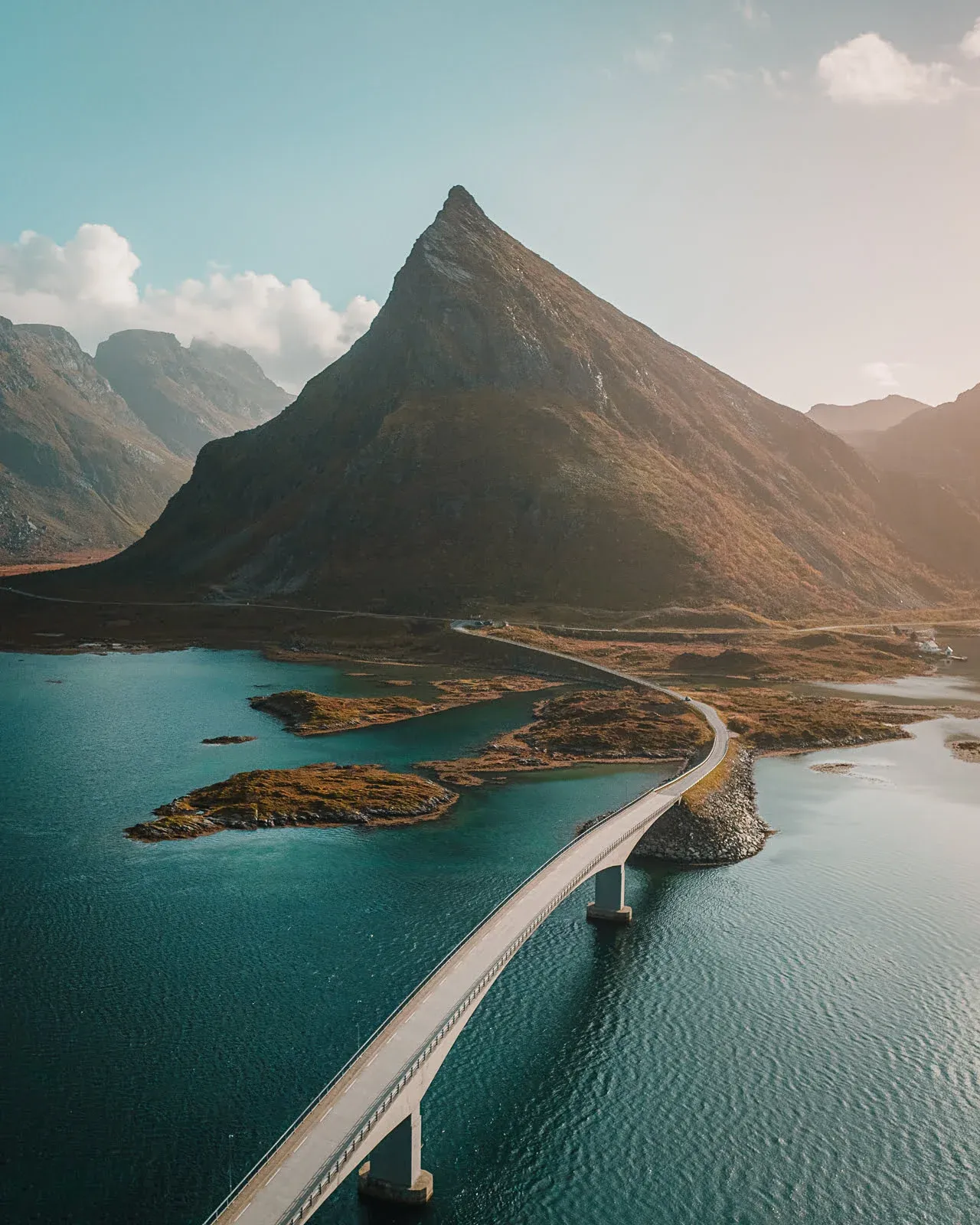
Our main goal for this road trip was to reach Lofoten and really experience that area, which is why we didn’t explore the other regions in as much depth.
Here are some suggested itineries:
- 3-5 Days - Bergen & Surrounding Fjords: Land in Bergen, drive to the nearby fjords and waterfalls such as Nærøyfjord and Kjosfossen, see Viking Churches like Borgund Stave Church. You can also hike iconic trails like Trolltunga.
- 7-10 Days - Fjord Norway to Trøndelag: Start in Fjord Norway and make your way north. Drive the Trollstigen mountain road, see the Geirangerfjord and stop at charming coastal towns such as Ålesund.
- 2 Weeks or More - South to North Adventure: Take on the ultimate Norwegian road trip by driving from the south all the way to the Arctic north. Begin in the fjords, head through Trøndelag and continue to the Lofoten Islands for dramatic peaks and beaches.
Planning on a road trip in Lofoten? See our 5 day road trip itinerary here.
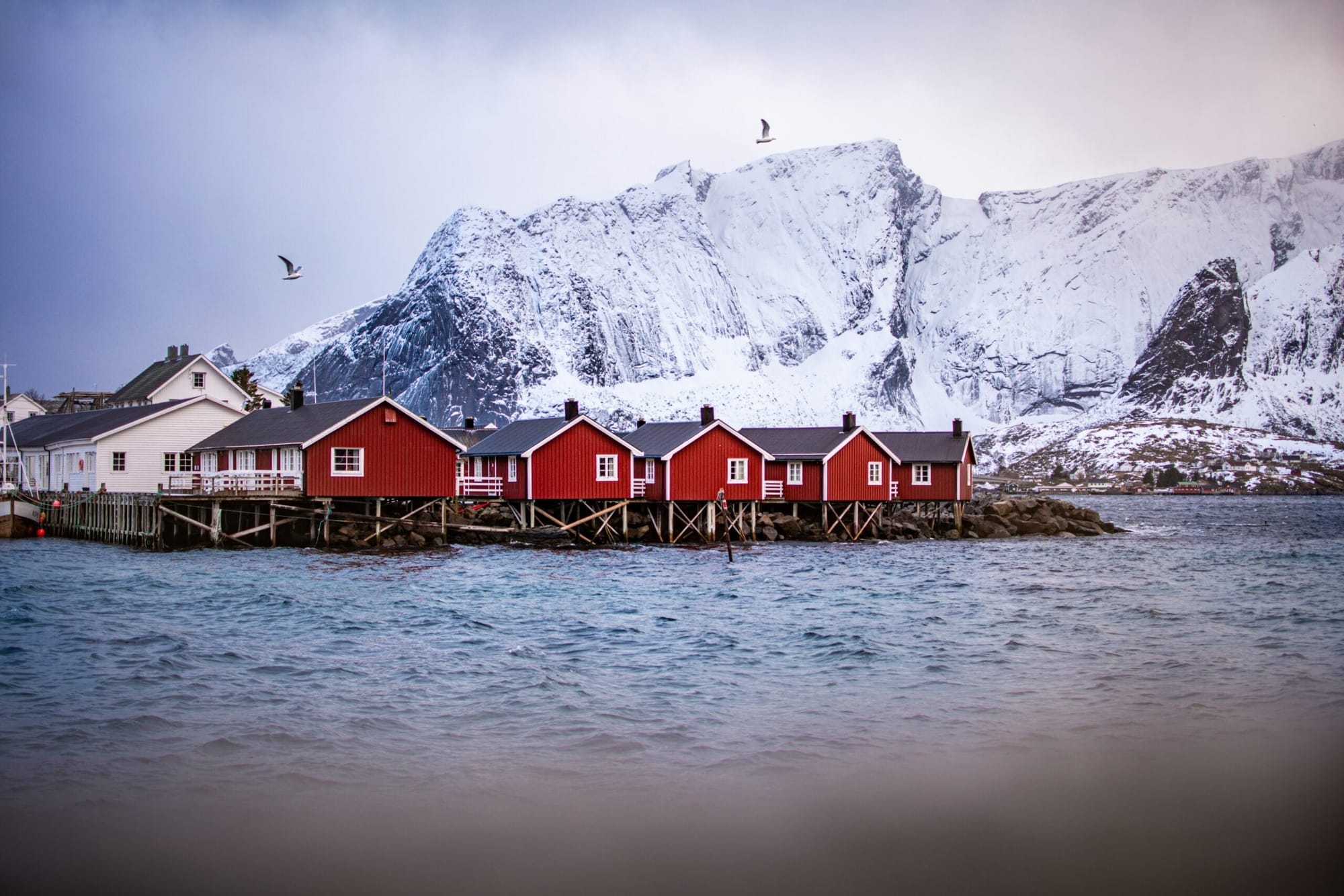
4. Plan Your Norway Road Trip Budget
Norway has a reputation for being expensive so we went in expecting high costs, but honestly, we didn’t find it as bad as we’d feared, especially coming from the UK! You can still shop fairly affordably at supermarkets when sticking to staples like bread, fruit and vegetables.
Cafés were on the pricey side, but not much different from UK prices, we were paying around 50 NOK (£3.60) for a coffee. Since we travelled Norway on a budget, we kept eating out and paid activities to a minimum, which helped us keep our overall costs much lower than expected.
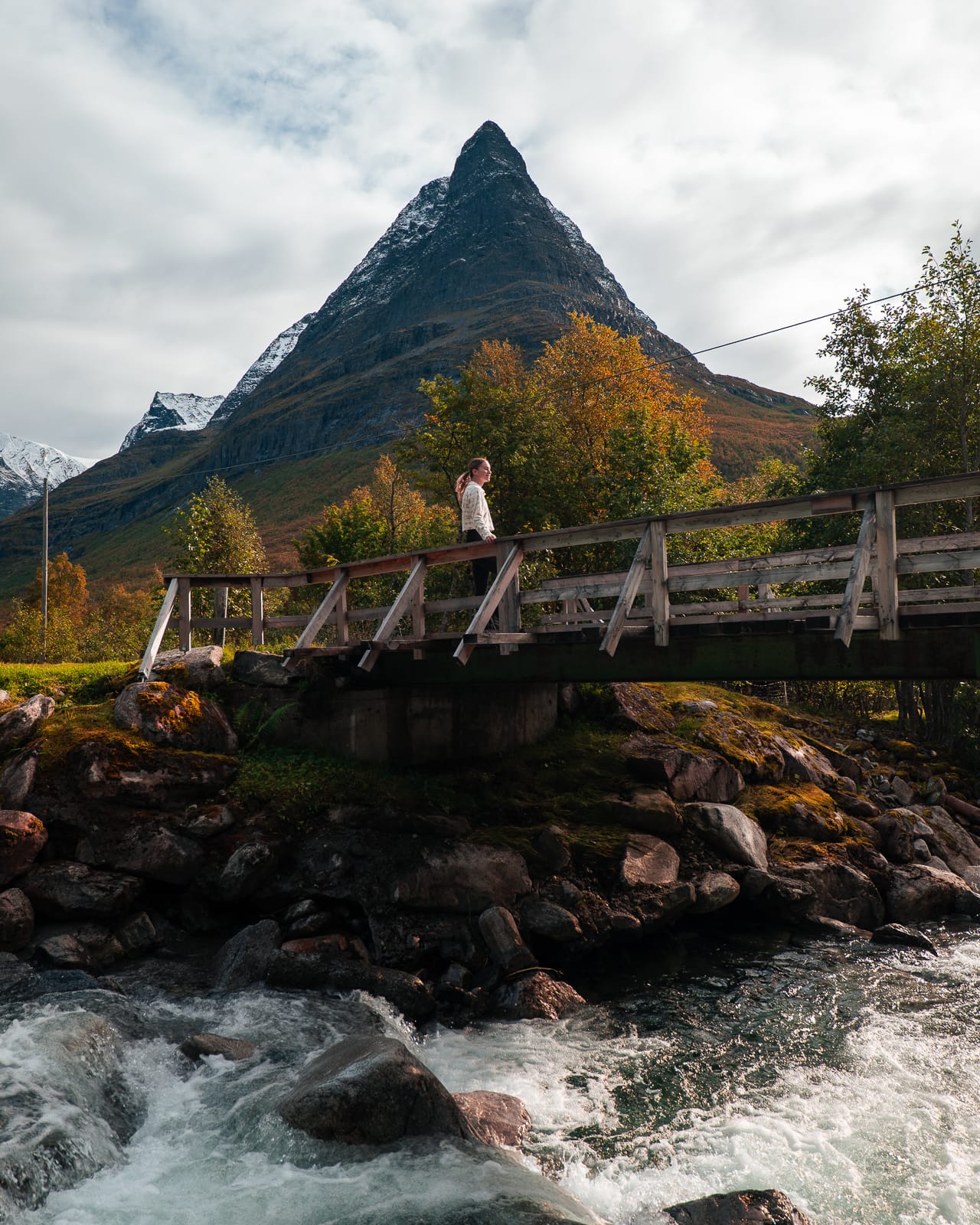
However, if you're not from the UK, you might find it quite expensive, so it's helpful to know what to expect before you go. While costs vary depending on your travel style, here’s a rough idea in Norweigan crona (with GBP equivalents):
- Car/Camper rental: Around 500-1,000+ NOK per day (£40-£80+) for a small car or campervan.
- Fuel: About 20-23 NOK per litre (£1.50-£1.80)
- Accommodation: Campsites cost around 200-350 NOK per night (£15-£30), basic cabins start from 600-1,100 NOK (£50-£90) and hotels often exceed 1,250 NOK (£100).
- Food: Around 700-2000 NOK (£50-150) for a weekly supermarket shop (depending on what you buy). Eating out is expensive, with a simple meal costing around 190-300 NOK (£15-£25).
- Ferries & tolls: Ferries typically cost 100-300 NOK (£8-£25) depending on the route and tolls are automatically billed to your rental.
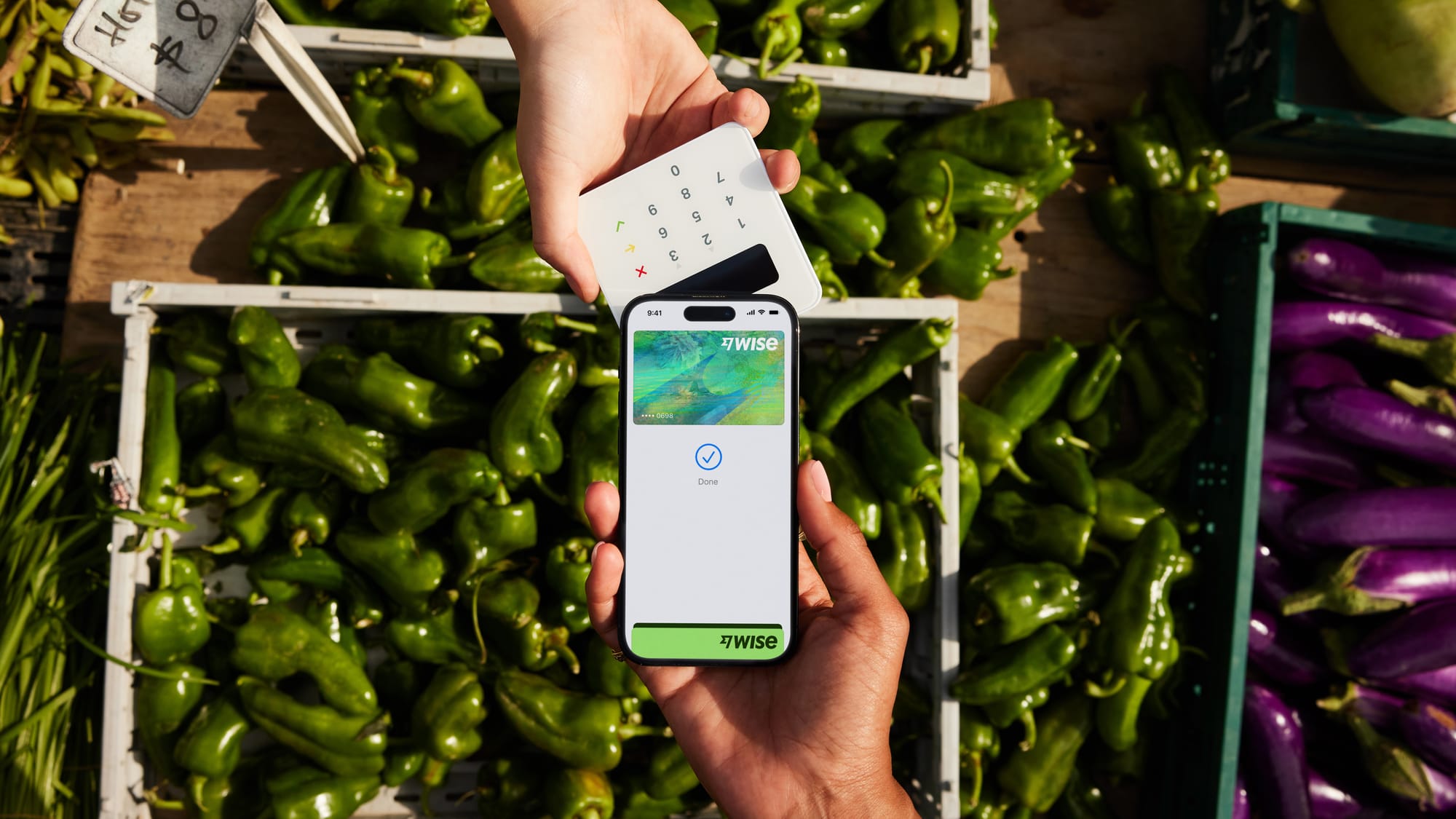
5. Visa and Entry Requirements for Norway
Before planning your Norway road trip, make sure you know whether you need a visa.
Norway is part of the Schengen Area, which allows travellers from most European countries to enter freely without a visa. Visitors from countries such as the USA, Canada, Australia, New Zealand, Japan and some others can also enter visa-free for up to 90 days within a 180-day period.
Travellers from all other countries must apply for a Schengen Tourist Visa to visit Norway. Here are the costs for a Schengen Tourist Visa:
- Adults: €90
- Children aged 6 to 12: €45
- Children under 6: Free
6. Book Your Flights and Car Rental
Once you’ve decided on your route and trip length, it’s time to book your transport and accommodation.
- Flights: Most international visitors fly into Oslo, but there are also good connections to Bergen, Trondheim and Tromsø if you want to start in a specific region. We always use sky Skyscanner or Wayaway to find flights!
- Car Rental: You'll want to find a car rental from the airport you fly to (unless you drive your own vehicle like we did). Make sure to book in advance and opt for unlimited mileage, as distances are longer than they seem!
7. Book Your Accommodation
If you choose a campervan, you won't need to book hotels but you might need to look into campsites, we didn't actually use any campsites during our road trip.
We freecamped everywhere under their "right to roam" law; which allows camping on most public and uncultivated land without permission. You just have to be at least 150 m away from buildings and respect the nature.
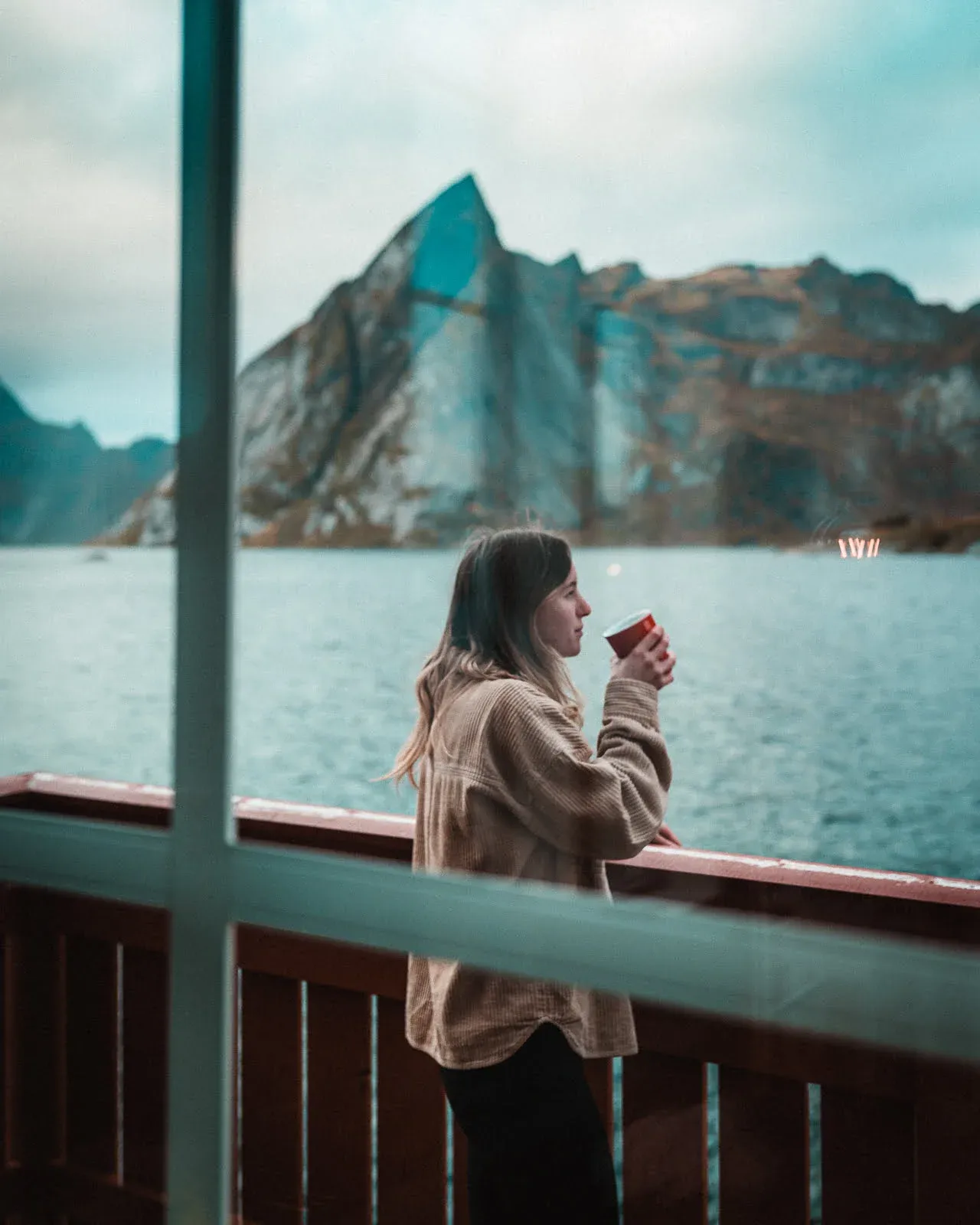
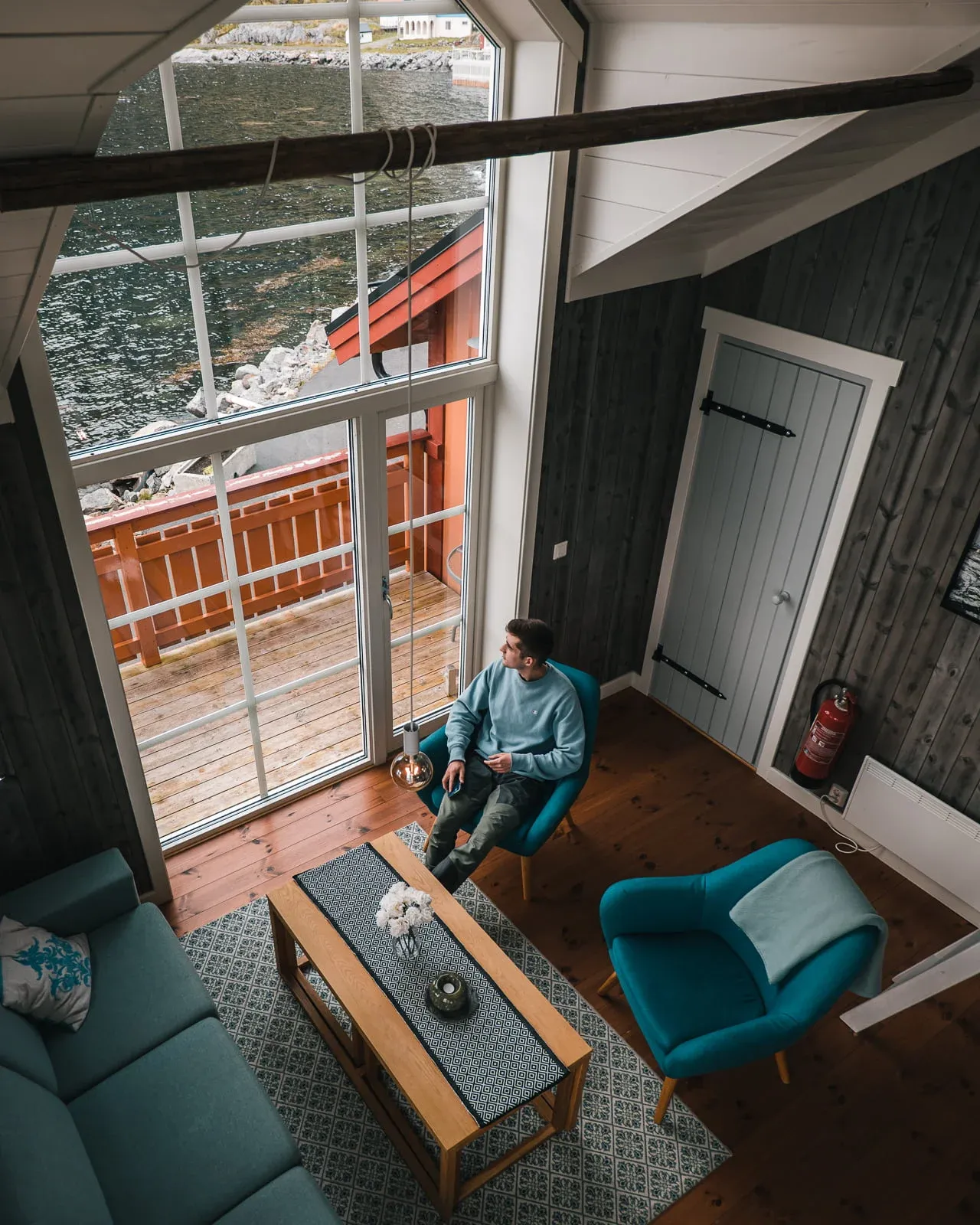
Reinefjorden Sjohus
We love finding unique places to stay wherever we travel, so even on a road trip, we like to mix things up by booking a few hotels along the way. It’s a great way to enjoy some extra comfort, take advantage of hot showers and catch up on laundry!
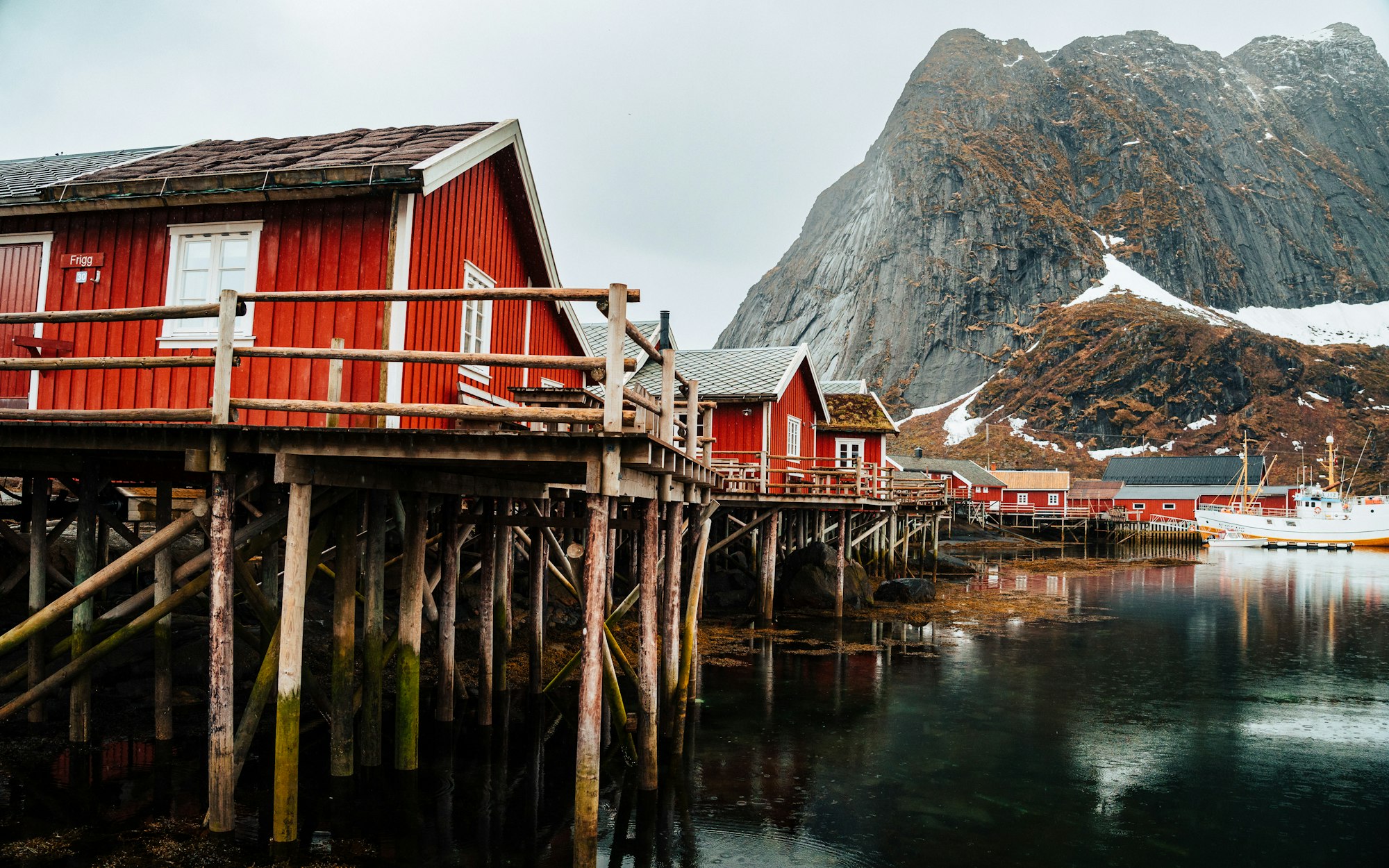
One of our favourite stays was Reinefjorden Sjohus in Lofoten - it’s incredibly cosy and offers stunning views right from your window. We can’t recommend it enough!
8. Book Your Tours and Experiences
Booking tours and experiences is one of the best ways to immerse yourself in Norway’s stunning landscapes while learning from knowledgeable local guides.
Whether it’s a fjord cruise through dramatic cliffs, chasing the northern lights, hiking with an expert, or kayaking across crystal-clear waters, there are endless ways to experience the country beyond the road.

We personally love using GetYourGuide and Viator to find tours, both platforms offer hundreds of unique experiences to suit every type of traveller.
9. Packing for a Norway Road Trip
Packing for Norway requires a bit of planning, as the weather can change quickly, especially if you’re heading into the mountains or up to the Arctic Circle. Even in summer, you’ll want to be prepared for rain and cooler temperatures.
Essentials to Pack
- Layered clothing: Base layers, warm fleece or jumper and a waterproof outer layer.
- Good hiking boots: Waterproof with good grip for trails and wet terrain.
- Rain gear: A reliable rain jacket and waterproof trousers.
- Camping gear: If you plan to wild camp, bring a quality tent, sleeping bag and cooking equipment.
- Travel adapter: Norway uses the standard European plug (type C/F).
- Snacks & supplies: Food and drinks can be pricey, so stock up at supermarkets.
10. Preparation for your Norway trip
A little preparation goes a long way to ensure your Norway road trip goes smoothly. Here are a few key things to organise before you set off:
Get Travel Insurance
Norway is safe, but accidents and unexpected events can happen, especially if you’ll be hiking, driving long distances or doing adventure activities. Make sure your travel insurance covers car hire, medical emergencies and outdoor activities.
Sort Out Your Connectivity (eSIMs & SIM Cards)
We used an eSIM in Norway, as it's the easiest way to stay online without hunting for a local SIM. We always use Airalo to buy eSIMS, which can be set up before arriving.
Driving Essentials
Check if your driving licence is accepted and see if you need to carry any extra documents.
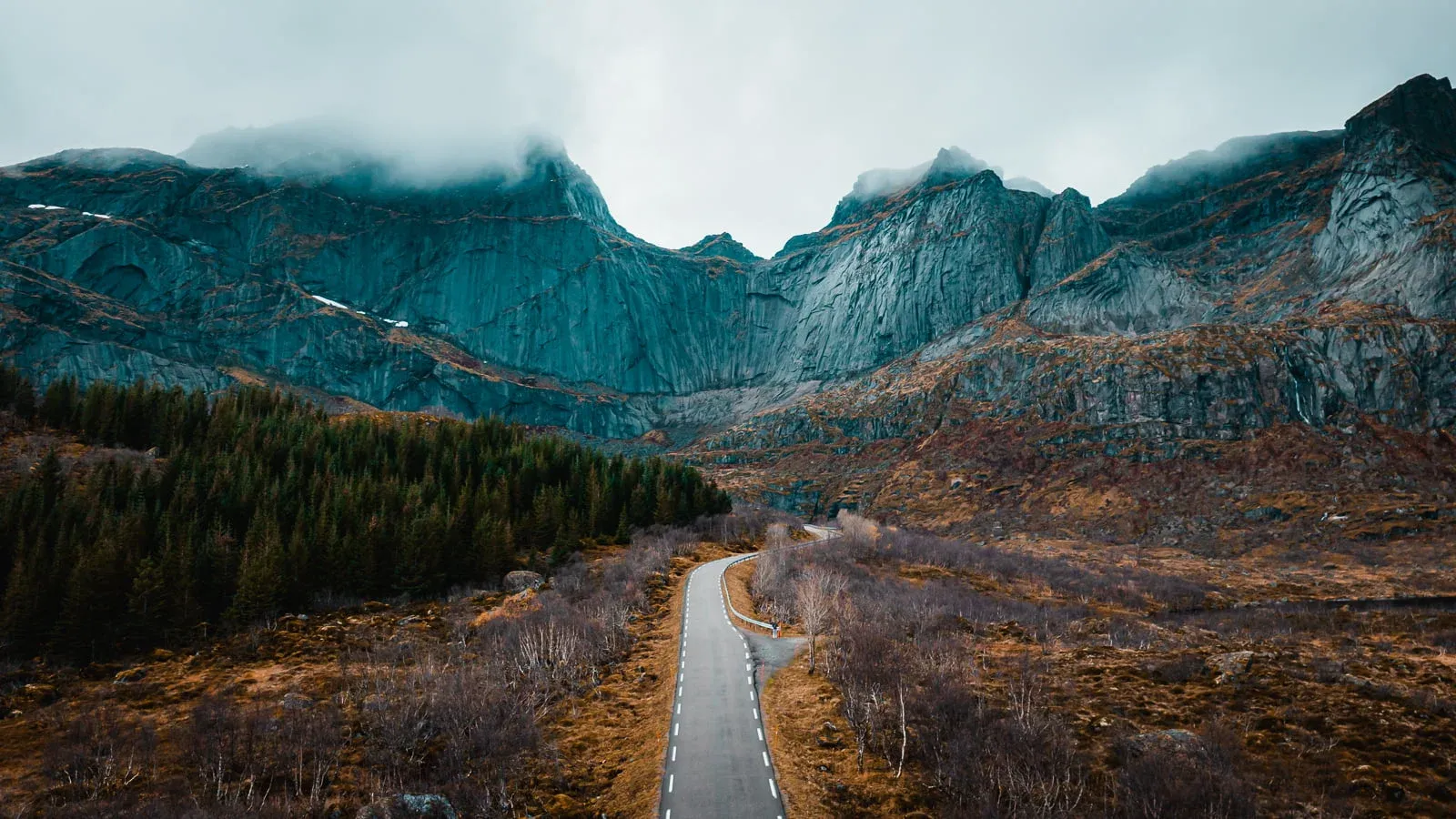
Download Offline Maps
Offline Maps are a lifesaver on a road trip, as signal can be patchy in remote areas. We always use Google Offline Maps!
Plan for Tolls & Ferries
Many roads have tolls and car ferries are common on many routes, so make sure to download the AutoPASS app or get a pass if you’ll be driving a lot.
👋 We hope that you found this guide helpful! Before you go - don't forget to read our other Norway travel guides for more tips, suggestions & advice.
